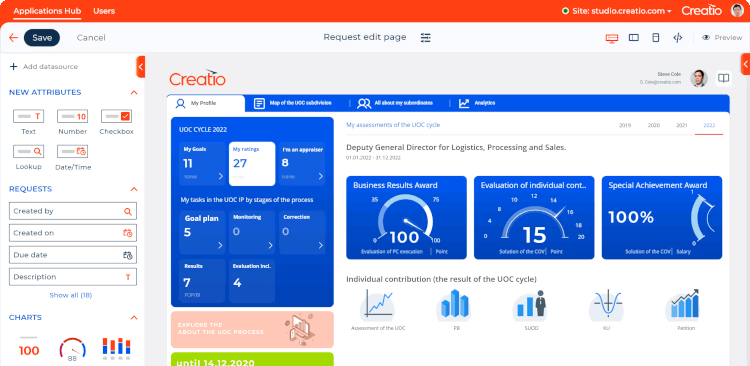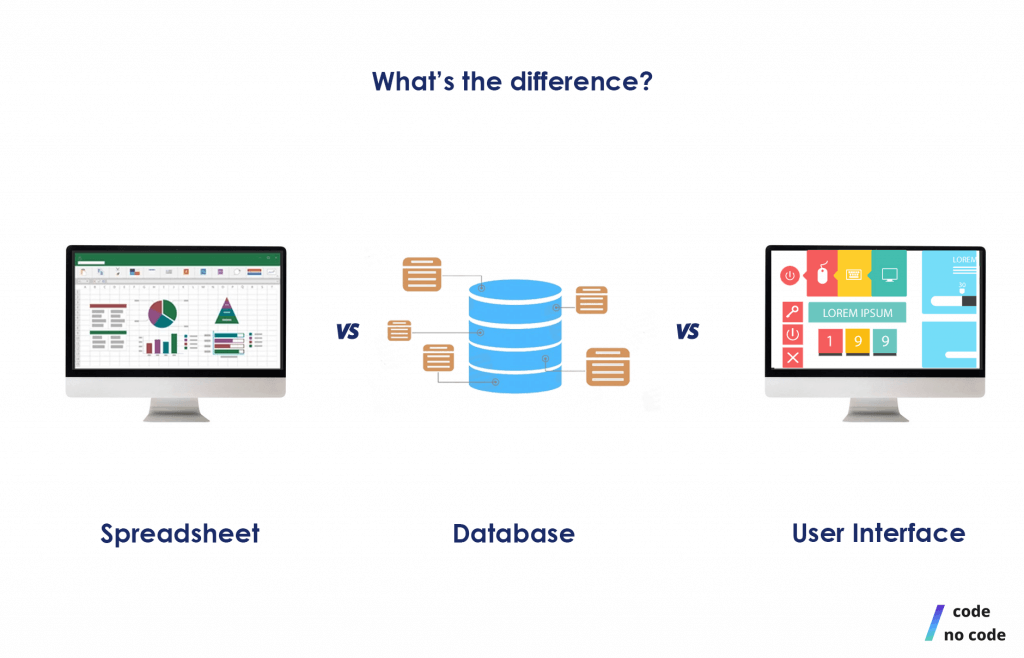How No-Code Devices Simplify Open Platform Data Source Development for Every Person
How No-Code Devices Simplify Open Platform Data Source Development for Every Person
Blog Article
Discover Just How Scalable Databases Can Be Made Use Of Without Coding to Improve Your Business Procedures
In today's hectic service setting, the ability to manage and evaluate information successfully is critical. no-code. Scalable databases, specifically when combined with no-code services, offer a transformative strategy that encourages non-technical users to improve operations.
Comprehending Scalable Data Sources
Scalable databases are crucial for modern service procedures, allowing organizations to effectively take care of increasing volumes of information without giving up performance. These databases are created to adapt and expand to the transforming demands of a service, making certain that they can deal with bigger datasets and even more intricate queries as organizational demands evolve.
Comprehending scalable data sources involves recognizing their 2 primary types: upright scaling and horizontal scaling. Upright scaling, or "scaling up," involves including even more power (CPU, RAM) to an existing web server to enhance efficiency. Alternatively, horizontal scaling, or "scaling out," involves adding a lot more web servers to disperse the lots, which frequently leads to higher versatility and mistake resistance.
One more important facet is the style of scalable databases, which can be either relational or non-relational. Relational databases, such as MySQL and PostgreSQL, are structured and utilize SQL for queries, while non-relational databases, like MongoDB and Cassandra, offer more flexibility with disorganized information.
Inevitably, recognizing scalable data sources is essential for organizations intending to utilize information as a calculated possession, enabling them to remain affordable in a significantly data-driven atmosphere.

Benefits of No-Code Solutions
Unlocking the potential of no-code options encourages organizations to streamline procedures and enhance performance without the requirement for extensive programming expertise. These systems allow non-technical individuals to develop, modify, and manage data sources easily, hence equalizing accessibility to technology across teams.
Among the key advantages of no-code solutions is their speed of application. Organizations can quickly deploy applications and automate processes, substantially lowering the moment invested in development cycles. This agility enables organizations to respond immediately to market adjustments and customer demands, fostering an one-upmanship.
Additionally, no-code platforms minimize dependence on IT departments for daily tasks, enabling technical teams to concentrate on even more intricate projects that require specialized skills. This shift not just maximizes resource allocation but likewise advertises development within the company.
Cost-effectiveness is another advantage, as no-code remedies can lower advancement and maintenance costs. By decreasing the need for coding experience, business can harness the capabilities of their existing labor force without the expenses of employing additional workers.
Popular No-Code Data Source Devices
The increase of no-code services has led to the appearance of numerous database devices that satisfy companies seeking performance and availability. These tools equip customers with restricted technological expertise to produce, manage, and manipulate databases seamlessly.

Caspio stands apart for its ability to build internet applications without any kind of coding. It permits businesses to develop durable databases and deploy applications promptly, providing to different market requirements. Similarly, Knack supplies powerful data and straightforward user interfaces management capacities, making it possible for organizations to build custom-made applications tailored to their workflows.

Usage Instances in Organization Operations
How can companies take advantage of data source tools to improve their operations? Scalable databases supply companies with effective capacities to manage and evaluate information without the demand for extensive coding understanding. These tools can enhance various company procedures, ultimately causing boosted performance her latest blog and efficiency.
One noticeable use instance is consumer relationship management (CRM) Services can make use of scalable databases to track client communications, preferences, and feedback, enabling tailored communication and better solution. By streamlining this information, teams can collaborate better and respond to consumer demands in real-time.
One more significant application is stock management. Firms can employ no-code data source devices to keep track of supply levels, track shipments, and forecast need. This makes sure optimal supply levels, minimizes waste, and minimizes stockouts.
Furthermore, project administration can gain from scalable databases by permitting teams to take care of tasks, target dates, and resources in a merged system. With real-time updates and information visualization, job supervisors can make informed choices.
Getting Going With Application
Implementing scalable databases in company procedures calls for an organized strategy to make certain effective integration and application. The initial step is to carry out an extensive requirements analysis, identifying specific company requirements, data kinds, and anticipated growth patterns. This foundational understanding will direct the selection of the appropriate database service.
Next, choose an user-friendly, no-code database system that aligns with your operational goals. no-code. see this site Many contemporary solutions provide intuitive user interfaces, enabling non-technical users to manage data properly. After picking a platform, develop a clear data architecture that details just how information will certainly be arranged, accessed, and kept
Training is important; ensure that employee are equipped with the essential skills to use the data source. Consider providing tutorials or workshops to familiarize team with the system's functionalities.
Conclusion
Finally, the combination of scalable data sources through no-code solutions provides considerable benefits for company operations. These systems equip non-technical individuals to effectively handle and examine data, facilitating enhanced decision-making and cooperation. By taking on devices such as Airtable and Idea, companies can decrease and streamline processes reliance on IT resources. Ultimately, leveraging these modern technologies can result in improved performance and operational efficiency, positioning companies for sustained growth in a competitive landscape.
One popular no-code database tool is Airtable, which integrates the capability of a spread sheet with the power of a data source.Just how can companies take advantage of data source devices to boost their procedures? Businesses can use scalable databases to track consumer communications, choices, and comments, allowing personalized interaction and much better service.Carrying out scalable databases in organization operations calls for a structured strategy to ensure successful combination and utilization.In final thought, the combination of scalable data sources through no-code remedies presents considerable benefits for service procedures.
Report this page